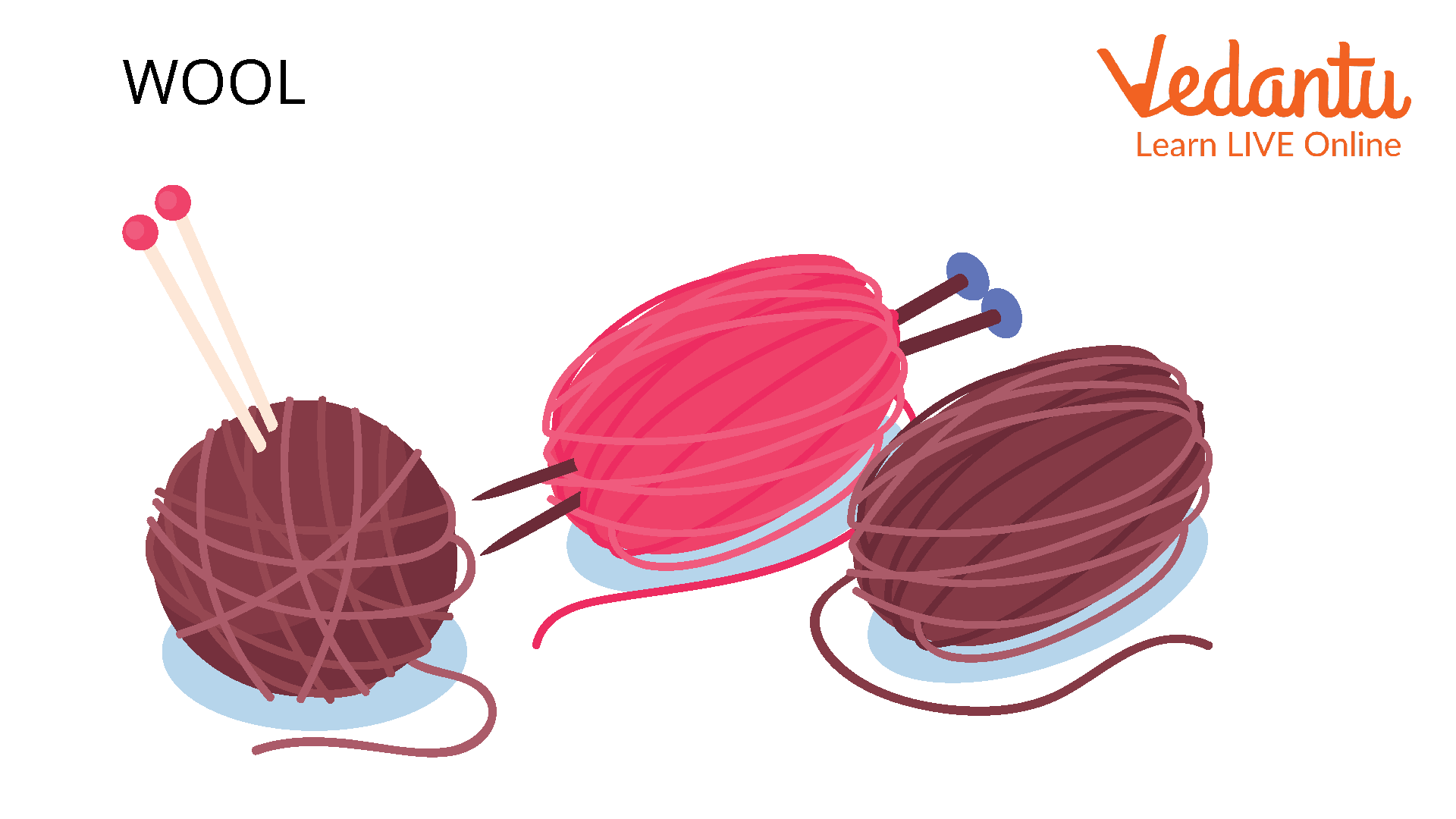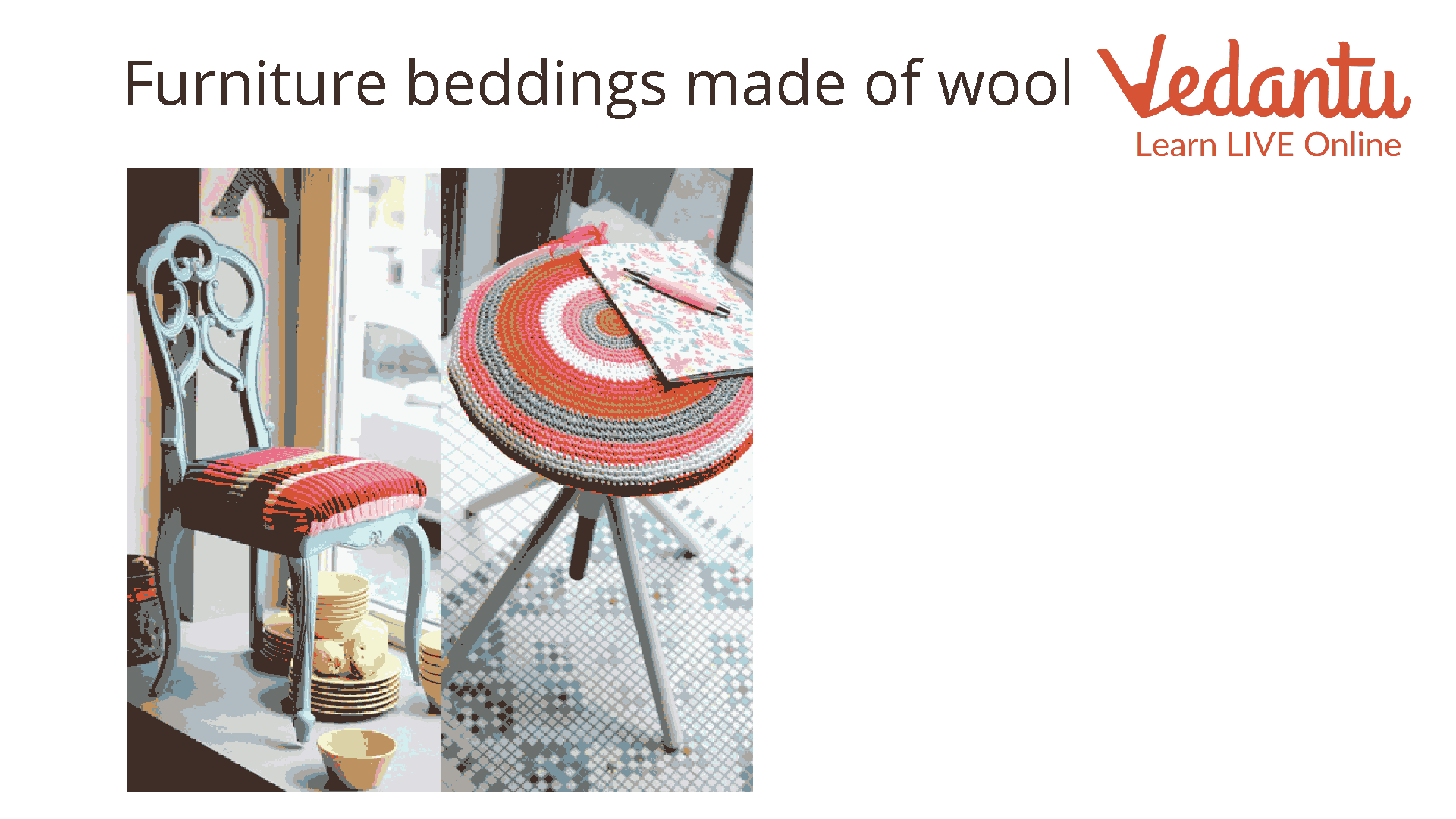




Why Is Wool Important in Everyday Life?
Sheep can produce wool. In the winter, it helps keep them warm and dry. To keep the sheep cool throughout the summer, they sheared. In a factory, the wool is gathered and cleaned. After being cleaned and arranged, the wool is spun into yarn. This wool strand is exceptionally long and has been folded up. The wool is then sent to stores or factories where it can be used to make garments.

Wool
What is Sheep Wool Used for?
Sheep wool has long been employed in the textile industry to create common woollen goods like carpets, clothing, curtains, covers, and beds.
Due to their thermal qualities, they have also been applied in the construction business.
When used in a compost mixture, sheep's wool has various advantages, including weed and pest control.
Organic material can be substituted with wool as a sustainable, renewable, and environmentally beneficial material.
Wool Uses
Wool is used to make woollen yarns. These woollen yarns are used to create gloves, hats, and sweaters. Caps are used every season, whereas sweaters and gloves are used in the winter as it is warm.
Wool is used to create a variety of garments, including expensive suits (coats and trousers). Wool is used to make kids' wool clothing like sweaters and socks that keep them warm and safe from the cold.
Wool is used to make hats, scarves (mufflers), gloves, and other cold-weather clothing.
Blankets are made of wool.
Hand embroidery is done with woollen yarn for manufacturing tablecloths and floor mats.
Additionally, bedding and soft furnishings are made of wool.

Furniture Beddings are Made of Wool
Wool making
Shearing is the procedure used to remove hair from a sheep's body.
Scouring is the procedure of washing sheep's wool to get rid of dirt and dust.
Sorting is separating wool of high grade from the wool of lower quality.
Combining is the procedure used to remove tiny knots from wool.
Carding or Burr rRemoval - In this procedure, the fibres are separated one at a time, which removes a lot of dirt and makes many fibres lie opposite one another.
They die after combing the wool. The fibres have been dyed in a variety of colours.
Spinning is the last step in making yarn; the coloured fibres are straightened and spun.
Summary
Wool is the soft, curly, typically thick coating in many hairy mammals. Sheep mainly produce wool. Wallpaper, cushions, lampshades, and curtains are ordinary. Shearing, scouring, sorting, colouring, straightening, spinning, and combing are involved. There are different uses of wool, such as their usage in the textile industry, the mufflers we wear, the hats we have, and even some furnishings of wool and carpets.
FAQs on Uses of Wool Explained for Students
1. What is wool and where does it come from?
Wool is a natural fibre that grows as the fleece on animals, primarily sheep. This fleece is carefully removed by a process called shearing, which is like giving the animal a haircut. The raw wool is then cleaned and processed into yarn, which is then used to make fabrics and other items.
2. What are five common things that are made from wool?
Wool is used to create a wide variety of products, especially those needed for warmth and comfort. Five common uses of wool are:
Clothing: Sweaters, coats, suits, and socks.
Home Furnishings: Carpets, rugs, and upholstery.
Bedding: Blankets and mattress toppers.
Accessories: Scarves, hats, and gloves.
Insulation: Used in buildings for natural thermal and sound insulation.
3. What are the main properties of wool that make it so useful for clothing?
Wool is highly valued for its unique natural properties. It is an excellent insulator, trapping air to keep you warm in the cold and cool in the heat. It is also highly durable and elastic, meaning it can be bent and stretched without breaking. Wool can absorb moisture without feeling wet and is naturally flame-resistant, making it a safe choice for many applications.
4. Why exactly does wool keep us so warm?
Wool keeps us warm due to the natural crimp (waviness) of its fibres. This structure creates millions of tiny air pockets within the fabric. These air pockets trap your body heat, preventing it from escaping into the colder surrounding air. This layer of trapped, still air acts as a very effective insulating barrier, keeping you cosy.
5. How is the fluffy fleece from a sheep turned into a sweater?
The transformation from fleece to sweater is a multi-step process. First, the fleece is sheared from the sheep. It is then cleaned thoroughly to remove dirt, grease, and vegetable matter. After cleaning, the fibres undergo carding, a process that brushes and aligns them. These aligned fibres are then spun into a continuous thread or yarn. Finally, this yarn is knitted or woven to create the fabric for a sweater.
6. Does getting wool from a sheep harm the animal?
When performed correctly by a trained professional, shearing does not harm the sheep. It is an essential part of their care, much like a haircut for humans. Domestic sheep are bred to produce a thick fleece, and if they are not sheared annually, the fleece can become excessively heavy, matted, and hot, potentially leading to health problems. Therefore, shearing is a necessary and humane practice for the animal's well-being.
7. Are there different types of wool?
Yes, there are many different types of wool, varying by the animal and breed. While sheep's wool is the most common, with Merino wool being one of the softest and finest, other animals also produce valuable fibres. For instance, Cashmere and Mohair come from goats, Angora comes from rabbits, and Alpaca wool comes from alpacas. Each type has distinct properties of softness, warmth, and lustre.









